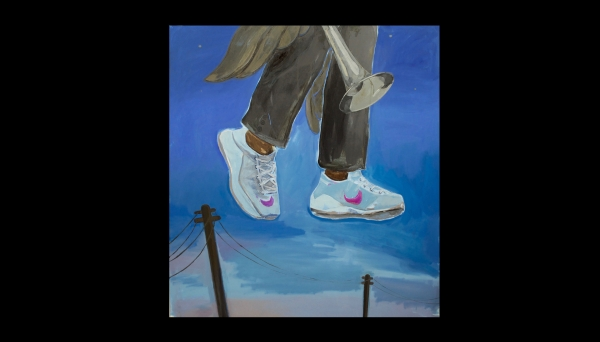Stanford’s Arts Institute’s Art + Justice workshops are a series of events that explore the relationship between the arts and justice through musical compositions, theater productions, operas, visual art exhibitions and other forms of art. On February 19th, I had the chance to tune into the series featuring composer Jonathan Berger, visual artist Enrico Riley and artistic director Niegel Smith as they discuss their roles in “The Ritual of Breath Is the Right to Resist.” This opera, co-commissioned by Stanford Live and the Hopkins Center for the Arts at Dartmouth College, is a multimedia song cycle and communal meditation on the death of Eric Garner that draws on the themes of atonement, resistance, witnessing, activism and togetherness. What struck me most about this conversation was how each artist touched on the piece’s goal to humanize Black people as they have undergone centuries of systemic oppression.
One topic the artists discussed throughout the conversation was the play on words in the title. The word “rite” serves as a substitute for “right.” This gives the title of the play a double meaning: While “rite” refers to the seven communal “rituals” of breath throughout the show, it also asserts the “right” to human life. In the words of the Hopkins Center for Arts at Dartmouth, the “activist opera invites audiences to rise up against the theft of Black breath.”
Composer Jonathan Berger, whose work often centers around ethics and social issues, further emphasized this by incorporating Eric Garner’s last words into the score of the piece. In doing so, the music preserves Garner’s voice before he was brutally murdered by police. Furthermore, this preservation of his breath actively resonates with the audience, who before hearing this music, remained passive observers of the art. Berger and his co-creators want to inspire audiences, collectively engaging them through the breathing rituals and music, to understand and act upon the trauma through activism. At the end of his presentation, he proclaims “some of us will die, but more of us will live,” reflecting on the deaths of those killed like Garner, but ensuring that people will continue to fight for justice.
Enrico Riley, Dartmouth Professor and visual artist, displayed his art during the show as well as several sketches he made during the planning process. His goal was to make art that, when combined with music, became a tool for resistance and survival. Depicted above, the piece that stuck out to me consisted of a figure, with only the legs showing, dressed in white Nikes and pants while levitating in the dusk sky with telephone poles in the background. There are no definite boundaries of where the skyline ends, implying infinite space to roam free. The numerous levitation paintings in the collection emphasize the existence of Black people in larger spaces. In a way, Riley’s gift, along with the other artists, is to ensure Black people are a part of these spaces by depicting their stories.
During the mediated conversation, Riley’s words on holding onto the humanity of the people being killed, not demonizing or idolizing them, were truly significant. He also touched on the point that the oppressors dehumanizing Black people in the first place allowed for these horrific events to occur. Riley continues by discussing the lack of relaxation as a part of the Black experience. Growing up, he had to learn a certain “education” of how to act to survive, and there was constant pressure to be perfect. Part of liberation, from what he says, is to be the “regular pedestrian,” or someone who has the right to make mistakes, the right to be human.
Lastly, artistic director Niegel Smith viewed the intersection of art and justice in this piece as a claim to humanity. At an early age, he also had to know about the oppression of black people. The question he asks through this “Ritual of Breath” is “how do we activate ourselves?” In other words, how do we go about “[considering] this piece, [reflecting] and [getting] out of your seat to do something about it?”
Describing the Opera House as a space of reflection and consideration to inspire collective action, the audience-guided breaths represent a radical act of resistance. He explains that “some people don’t care if you [breathe] or don’t breathe,” so coming together and breathing is the music of action. It allows the audience to “meditate on our shared humanity and to join in the agency of shared resistance” within a community.
Thus, the seven rituals of “Ritual of Breath Is the Rite to Resist” — six to become engaged with the work, and one to inspire action — offer a pathway to stay in a movement of humanity. After attending this event, I feel aspire to continue working toward change for all communities and inspiring action through my craft.
